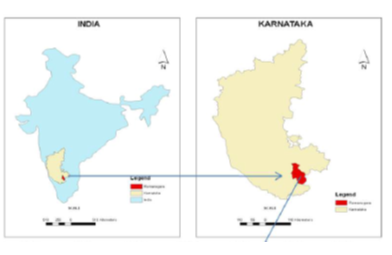
Geographical analysis
Department of Geography & GIS

Department of Geography & GIS

Geographical analysis
Year: 2018, Volume: 7, Issue: 2, Pages: 44-46
Original Article
M B Shivanna1
1HOD of Geography, Govt. First Grade College, Vijayanagara, Bangalore
Received Date:12 March 2018, Accepted Date:23 October 2018
The study of human resource is of vital importance both from the point of view of economic development and social welfare. It is particularly important because human beings are not only instrument of production but also end in themselves. It is necessary to know quantitative terms, the number of people living in a region at a particular time, the rate at which the number is growing and the composition and distribution of population. According to the 2011 census Ramanagara district has a population of 1,082,739. The district has a population density of 303 inhabitants per square kilometre. Its population growth rate over the decade 2001-2011 was 50.6 %. Ramanagara has a sex ratio of 976 females for every 1000 males, and a literacy rate of 69.2 %. male and female were 548,060 and 534,679 respectively. In 2001 census, Ramanagara had a population of 1,030,546 of which males were 524,694 and remaining 505,852 were females. Ramanagara District population constituted 1.77 percent of total Maharashtra population. In 2001 census, this figure for Ramanagara District was at 1.95 percent of Maharashtra population.
Keywords: Demography; Ramanagara
© 2018 Shivanna. This is an open-access article distributed under the terms of the Creative Commons Attribution License, which permits unrestricted use, distribution, and reproduction in any medium, provided the original author and source are credited.
Published By Bangalore University, Bengaluru, Karnataka
Subscribe now for latest articles and news.